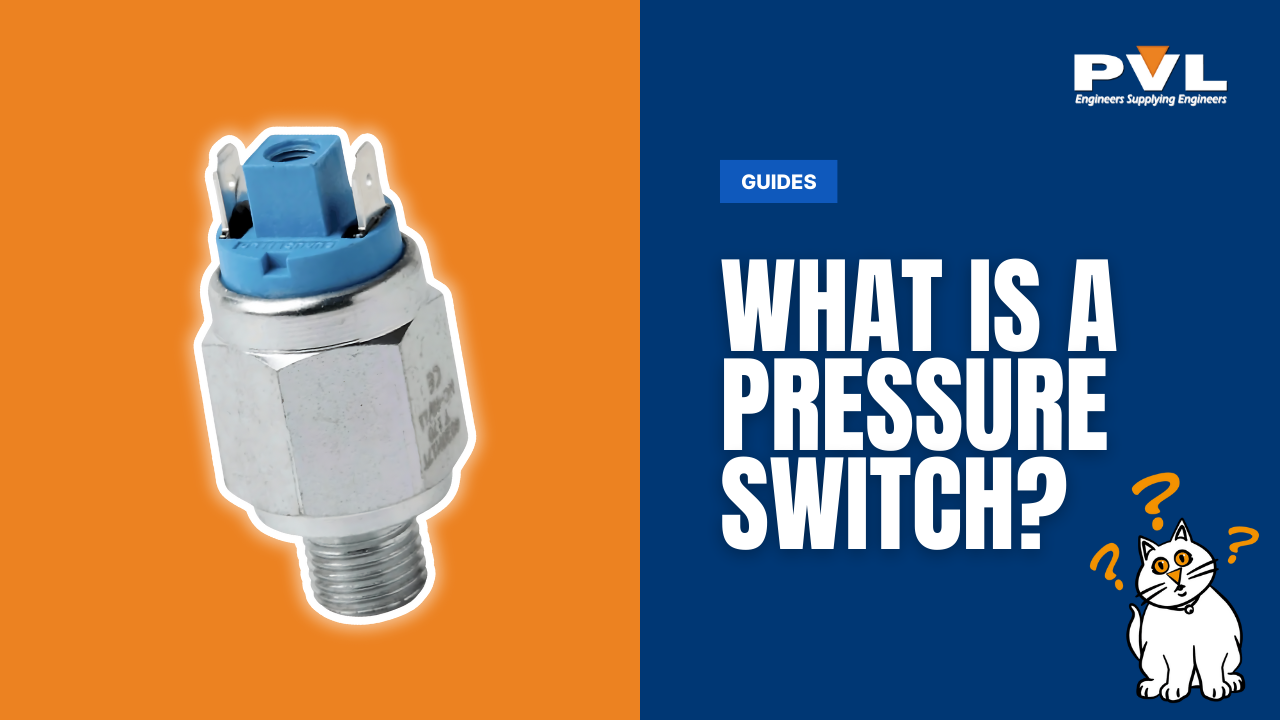
What is a Pressure Switch?
Ah, pressure switches. They might not be the stars of the show, but these little devices are the unsung heroes keeping our world running smoothly. Ever wondered what makes your washing machine stop filling with water or how your car’s tire pressure gauge knows when it’s time to beep at you for underinflation? Spoiler alert: it’s the pressure switch! Buckle up, because we’re about to dive into the world of pressure switches in a way that’ll have you appreciating these gadgets like never before.
The Basics
Let’s kick things off with the basics. Imagine a pressure switch as a tiny, vigilant guard standing at the entrance of your machinery or system. Its job? To monitor the pressure and make sure everything’s running smoothly. If the pressure gets too high or too low, the pressure switch steps in to either shut things down or kick them into high gear. Think of it as the “Goldilocks” of pressure—always making sure things are “just right.”
These switches work based on a simple principle: they sense pressure changes and trigger an electrical switch. When the pressure exceeds or falls below a preset level, the switch changes state. It’s like having a very fussy, very precise roommate who’ll only let you into the kitchen if the conditions are perfect. And honestly, who wouldn’t want a roommate like that?
How Do Pressure Switches Work?
Now, let’s get into the nitty-gritty of how these little guys do their thing. At their core, pressure switches are pretty simple. They contain a sensing element (think of it as a pressure-sensitive part of the switch) that reacts to changes in pressure. When the pressure hits a certain threshold, this element either expands or contracts, which activates or deactivates the switch.
To picture this, imagine a spring-loaded doorstop. When you push on it, the spring compresses. When you release, it springs back. Similarly, the sensing element in a pressure switch reacts to pressure changes and either opens or closes the circuit. This opening or closing action sends a signal to other parts of the system to either start or stop what they’re doing. It’s like a high-tech version of the “stop” and “go” signs you see on the road.
Types of Pressure Switches
Pressure switches come in various flavors, each suited for different applications. The most common types are mechanical and electronic pressure switches. Let’s break these down.
Mechanical Pressure Switches: These are the old-school, tried-and-true type. They use physical components like springs and diaphragms to detect pressure changes. Mechanical switches are robust and reliable, making them perfect for basic applications where precision isn’t the top priority. Think of them as the sturdy, no-nonsense types who always get the job done.
Electronic Pressure Switches: These are the sleek, high-tech versions. They use electronic sensors and microprocessors to detect and manage pressure. Electronic pressure switches are great for applications requiring high precision and complex control. They’re like the tech-savvy, gadget-loving friends who always have the latest gear and know how to use it.
Applications
Pressure switches are like the Swiss Army knives of the industrial world. They find their way into all sorts of applications. For instance, in your car, pressure switches monitor tire pressure and ensure it’s at a safe level. If your tire pressure drops, the switch sends a signal to the dashboard light, which then annoyingly blinks at you to remind you to get it checked. Thanks to pressure switches, you can avoid those pesky blowouts and stay safe on the road.
In the world of home appliances, pressure switches are equally indispensable. Take your washing machine, for instance. When it fills with water, the pressure switch ensures it doesn’t overflow by signaling when to stop the water flow. Without this crucial component, you’d be dealing with a flooded laundry room and a very unhappy household. Pressure switches also play a significant role in HVAC systems, where they regulate air pressure to keep your home at a comfortable temperature. It’s all about keeping things balanced and running smoothly.
The Importance of Proper Maintenance
Like any piece of equipment, pressure switches need some TLC to keep them in tip-top shape. Regular maintenance can prevent those annoying breakdowns and ensure your systems continue to run smoothly. A common issue is the buildup of debris or contaminants that can affect the switch’s performance. Imagine your pressure switch is like a coffee filter. If it gets clogged, the coffee (or in this case, the pressure) can’t flow through properly.
To avoid such issues, it’s essential to clean and inspect your pressure switches regularly. Check for any signs of wear and tear, and ensure that the sensing element is free from obstructions. It’s also a good idea to calibrate the switch occasionally to make sure it’s still responding to pressure changes accurately. Think of it as giving your pressure switch a spa day—fresh, clean, and ready to work its magic.
Common Misconceptions About Pressure Switches
Pressure switches might not be the most glamorous of devices, but they do get their fair share of misunderstandings. One common misconception is that all pressure switches are the same. In reality, they vary widely in terms of design, function, and application. It’s like thinking all cars are the same just because they all have four wheels. Sure, they have some similarities, but they’re each designed for different purposes and environments.
Another myth is that pressure switches are only used in industrial settings. Nope! As we’ve seen, they’re everywhere—from your car’s tires to your home’s washing machine. They’re like the quiet background actors in your everyday life, making sure everything runs smoothly without drawing too much attention to themselves.


